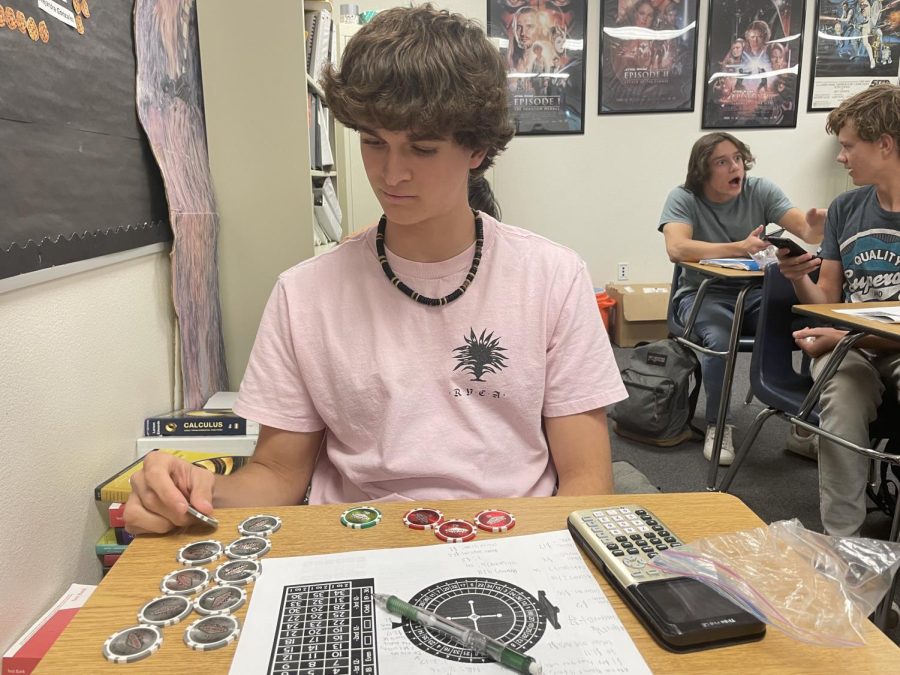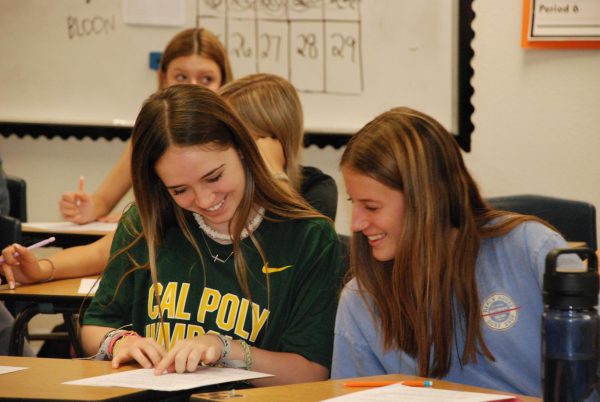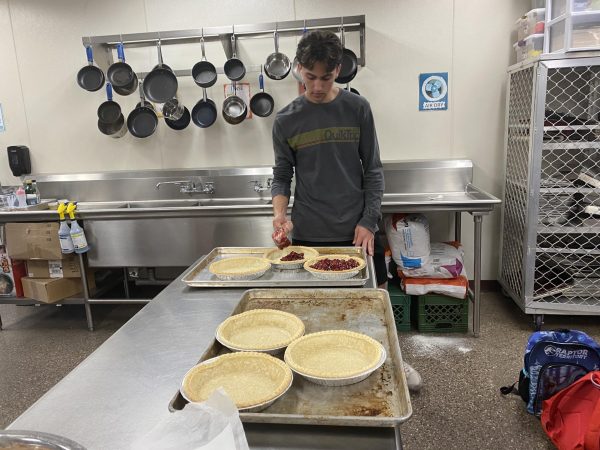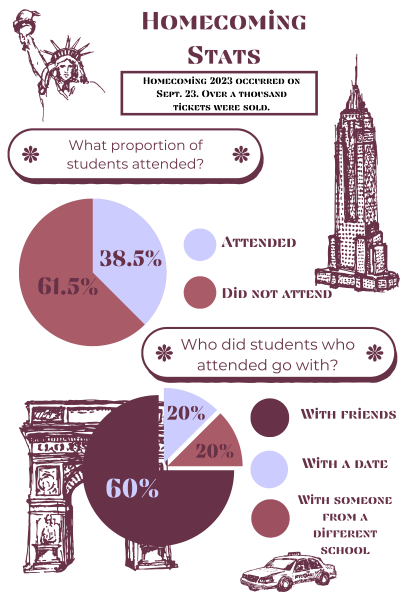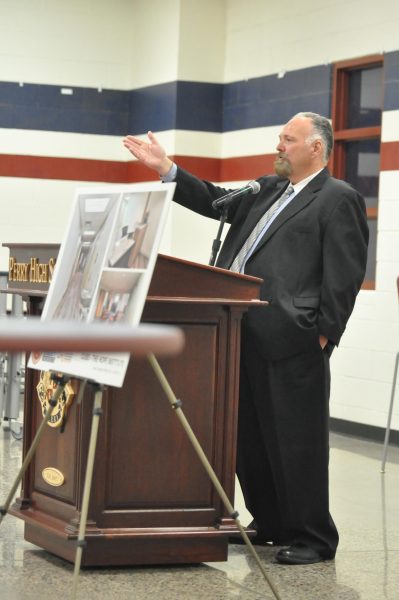AP testing, what’s next?
Senior Lukas Aldrich sorts his chips in preparation for a game of roulette in his AP Statistics class taught by Thomas Rothery.
After spending the entire year studying for the AP test, students have begun to wonder, what comes next? Teachers across campus have projects following the test in order to keep the curriculum going despite the end of testing.
Thomas Rothery, AP Statistics and Calculus AB teacher, shares his plans for his students. Prompted by a students’ interest, AP Statistics will be learning the hands of different card games and the math behind them. With two weeks left to spare, Rothery will teach the lottery, roulette, and poker. Following the demonstrations, the students will receive an open note test to see what they’ve learned at the end of the school year.
“The message is that casinos don’t provide games where the player has the advantage. With the rules that we show and the outcomes that exist, we’re showing that everything is a losing game. It is really to their disadvantage to ever choose to participate, but we’ll show them the math as to why,” said Rothery.
Rothery’s AP Calculus AB class will have a project based on cross-sections. “It may not be nearly as dazzling, but you’re going to create a picture using your own materials and find the volume of it using integrations,” Rothery said. The project will also be entered into the test category. Neither is extra credit or optional.
AP Environmental Science teacher Jill Kenyon is having her students create Pokemon cards for endangered species. She hopes that with project based learning, students will be able to relax and take a break from the stresses of AP testing. “I think there’s a big push to get through AP [testing], especially if you’re taking more than one, and kids need a mental break to remember that school is still fun after all that testing,” said Kenyon.
AP Physics 1 is participating in an egg drop in addition to their finals. The students will spend two weeks constructing their structure with a budget of $25. They must also create a PowerPoint explaining their composition of the mechanism as they drop it from the balcony of the F building. Junior Megan Bekker is participating in the experiment. “My group decided to 3D print a holder for the egg to keep it in place. We then added foam to the bottom and a parachute connected to some straws that go through the plastic,” said Bekker.
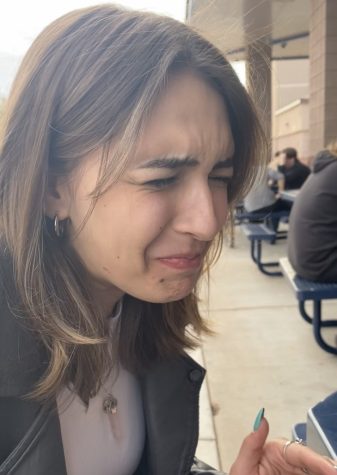
Lexi Amaro is a senior at Perry High School, and this is her second year writing for the Precedent. She is so excited to be this year’s News Editor!...

